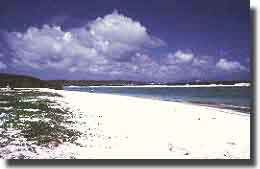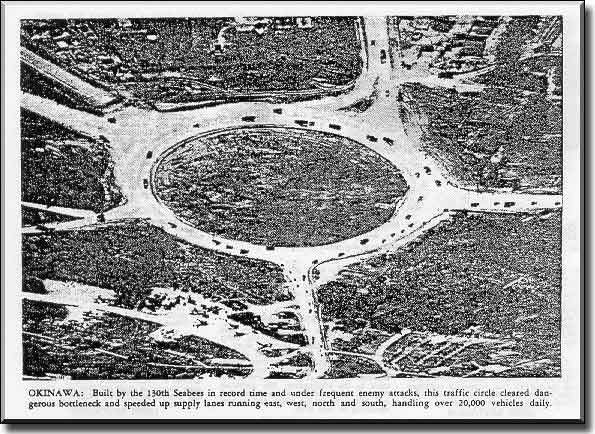|
The Amazing Seabees of WW2, their road across the Pacific to Tokyo
The Seabees built the first airstrip in the New Hebrides when the Japanese were hastening to finish the airfield on Guadalcanal. In August 1942, US Marines invaded Guadalcanal, and took this airfield away from the Japanese, it was the task of the Seabees to both finish the now named Henderson Field, and to maintain it by filling in the bomb craters and shell holes, after every enemy raid on it, as the Japanese endeavoured to make this strip both unusable and untenable. The Seabees moved from island to island, each a new stepping stone, in their advance northwards on the slow grind to Tokyo. At Pearl Harbor, a one strip airfield was turned into miles of runways, roads and hangars, as the Seabees transformed Honolulu. A string of islands in the arctic were tamed, Atak, Kiska, Attu. Three Battalions, the 24th. 47th. and 73rd. in only 11 days had an airstrip laid and operating in New Georgia, but the mad rush northwards continued, off to the Admiralty Islands. In early 1944, the dead line until the end of September to build a major base, airstrips,and a tank farm, this mammoth job was finished with a month to spare, a huge base, the tank farm with a capacity for a million barrels of fuel and back up pipelines of over 10 miles all laid and working. From these airfields at Manus, US Bombers took off to pound Japanese installations at Yap, Truk and Palau. Guam was the next challenge, it needed to be converted into a major Fleet Base including a huge harbour, and work commenced in the first week of August, in a few short months the Seabees had, as usual, performed the apparently impossible. Apra Harbour became the 2nd. busiest port in the world after Antwerp in Belgium, the coral ring around the island of Guam needed to be blasted out, the shallow harbour dredged to a new depth, piers constructed, to dock all sizes of ships up to Battleships, it was all achieved.
They blasted, hauled and packed down enough coral to fill the entire volume of the Boulder Dam three times over. 112 Million cubic yards of filling were used, amazing statistics indeed. It was from Tinian's airfields that the Bombers carrying man's first Atomic Bombs took off to bomb Japan and force that nation to surrender. At Samar in the Philippines the amazing Seabees carved out of the virgin jungle a site to build a 3,000 bed Fleet Hospital, no project was too large, or too hard for this Naval Construction Group. On to Iwo Jima, air strips appeared where it was not thought possible to build them, Okinawa came next, a dozing island transformed into a bustling city, rice paddies and cane fields suddenly become Chimu Wan airfield. The Seabees laid out the Kadina Traffic Circle, it handled 20,000 vehicles every day, and rivalled some of Washington D C's busiest traffic circles, 800 miles of new highways produced to US standards. Whilst on Okinawa, the Seabees learned that Japan had surrendered, their many tasks so ably performed now at an end. The Seabees left behind them a proud record of achievement, from their Training Camps in the United States, they battled and built all the way across the Pacific to Japan. The road to Tokyo now complete! 325, 000 men had served in the Seabees across the world in WW2.
The famous Seabees at work in Okinawa
7 July 2005 No big deal but I think the photo of the traffic circle at Okinawa might be upside-down (from the writing, seems to have been originally published that way): The perspective just looked a little strange to me, so I saved a copy, rotated it and it looks better. regards, |



